 |
|
Chris Ofili's first major U.S. solo museum exhibition occupied three main galleries at the New Museum and closed January 2015. Missed it? No worrries, here's some images from the show, compliments of the New Museum.
Chris Ofili: Night and Day
|
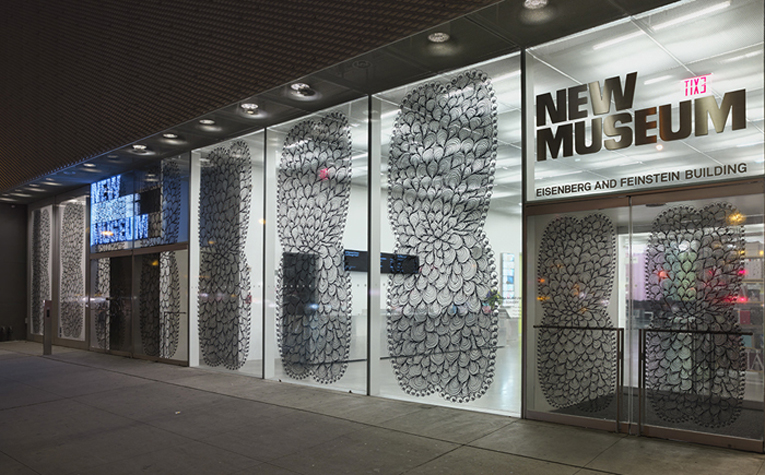
|
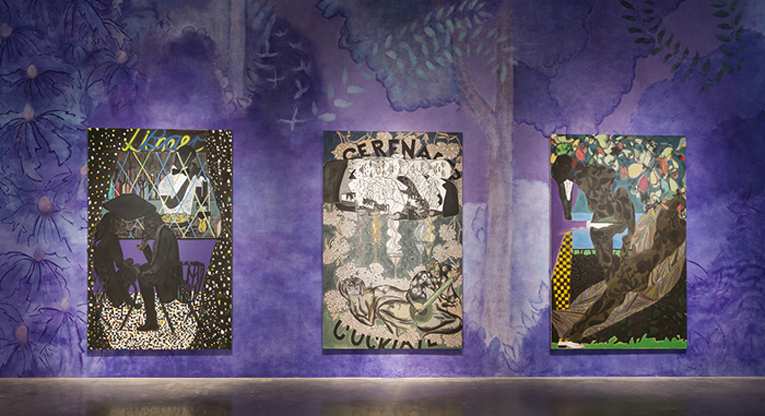
Over the past two decades, Ofili has become identified with vibrant, meticulously executed, elaborate artworks that meld figuration, abstraction, and decoration. In his extremely diverse oeuvre, Ofili has taken imagery and inspiration from such diverse, history-spanning sources as the Bible, hip-hop music, Zimbabwean cave paintings, Blaxploitation films, and William Blake’s poems. Night and Day featured over thirty of Ofili’s major paintings, drawings, and a selection of sculptures from over the course of his twenty-year career.
Ofili’s early paintings from the ’90s were created using his signature layering of materials, including paint, resin, glitter, and elephant dung, and a diverse combination of iconography. The exhibition will bring together more than twelve of his canvases from this period, which combine spectacularly rendered psychedelic surfaces with provocative imagery from a staggering array of cultural sources, from religious icons to Blaxploitation films.
From this early period, Ofili established an approach to painting that is both seductive and rigorously historical. After moving to Trinidad from London in 2005, Ofili’s work took a new direction and prompted “The Blue Rider” series, which takes its name from the early twentieth-century artist group that sought spirituality by connecting visual art with music. Since then, Ofili created a number of large blue paintings. For this exhibition, nine of these works were brought together for the first time in an architectural environment designed by the artist. Composed in dark hues of blue, this series of paintings evokes the blue light of twilight and the soulfulness of blues music. Although rooted in the landscape and culture of Trinidad, Ofili’s blue paintings extend beyond to offer a contemplative approach to history, identity, and ways of seeing.
|
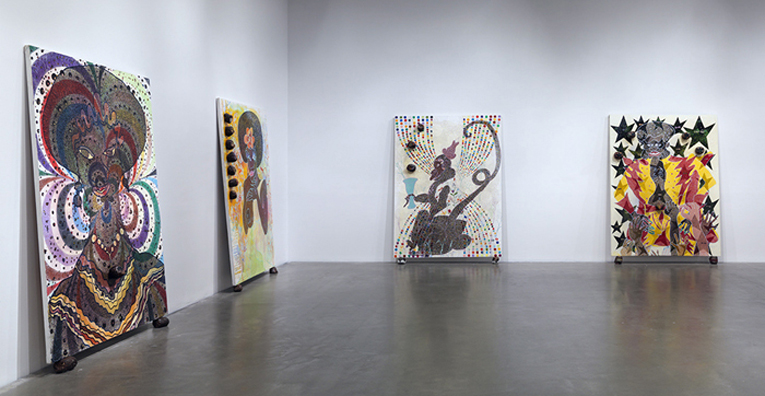
His most recent canvases have been animated by exotic characters, outlandish landscapes, and folkloric myths that resonate with references to the paintings of Henri Matisse and Paul Gauguin. This exhibition also included a selection of paintings from Ofili’s “Metamorphoses” series.
These brightly colored canvases were inspired by the poem of the same name by Ovid and illustrate the ancient Roman author’s stories of gods and humans, including the tale of the goddess Diana and the hunter Actaeon. They were initially created at the invitation of the National Gallery of London in response to their own series of paintings of Diana and Actaeon by Titian from the mid-sixteenth century. Ofili’s paintings offer a unique interpretation of both the original text and its painted interpretations, opening up the ancient myths to new, contemporary readings.
Ofili’s hybrid juxtapositions of high and low, and of the sacred and the profane, simultaneously celebrate and call into question the power of images and their ability to address fundamental questions of representation. Through a series of unexpected connections between his most important bodies of work, "Chris Ofili: Night and Day" at the New Museum was a reflection of the vast breadth of his practice.
|
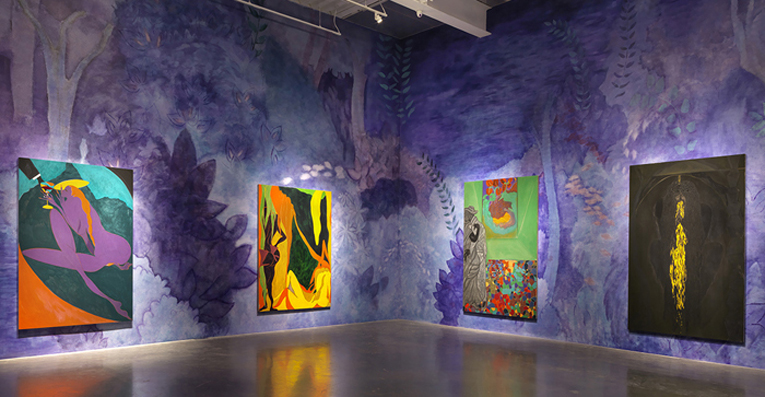
|
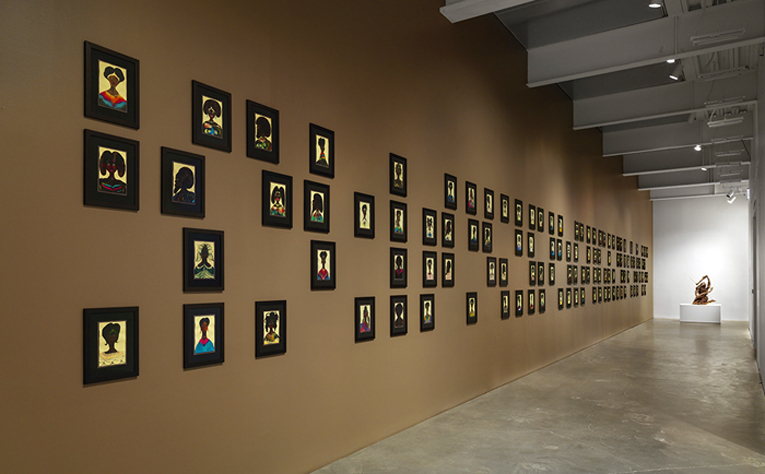
|
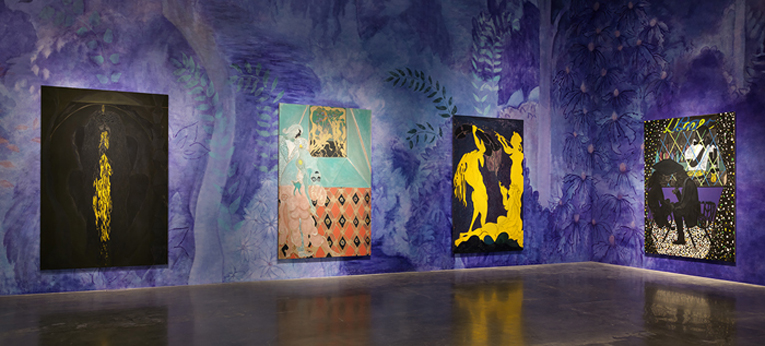 |
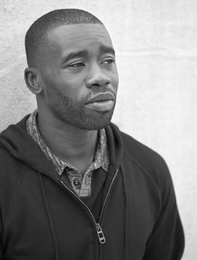 |
Chris Ofili was born in Manchester, England, in 1968, and currently lives and works in Port of Spain, Trinidad. He received his BFA from the Chelsea School of Art in 1991 and his MFA from the Royal College of Art in 1993. Solo exhibitions of his work have been presented internationally, including recent shows at the Arts Club of Chicago (2010); Tate Britain, London (2010 and 2005); kestnergesellschaft, Hannover (2006); and the Studio Museum in Harlem, New York (2005). He represented Britain in the 50th Venice Biennale in 2003 and again at the 56th in 2015. In 1998, Ofili won the Turner Prize. His works are held in the permanent collections of a number of museums, including the British Museum, London; the Carnegie Museum of Art, Pittsburgh; the Museum of Contemporary Art, Los Angeles; the Museum of Modern Art, New York; Tate, London; the Victoria and Albert Museum, London; and the Walker Art Center, Minneapolis.
<< aRT + cULTURE report |
|
|
|

|
|

